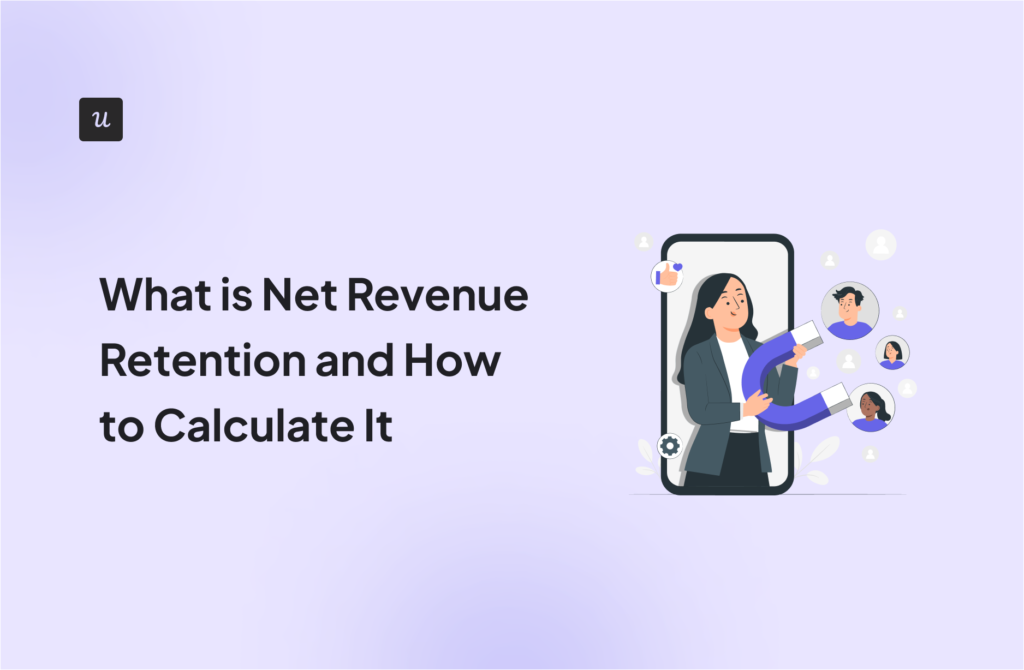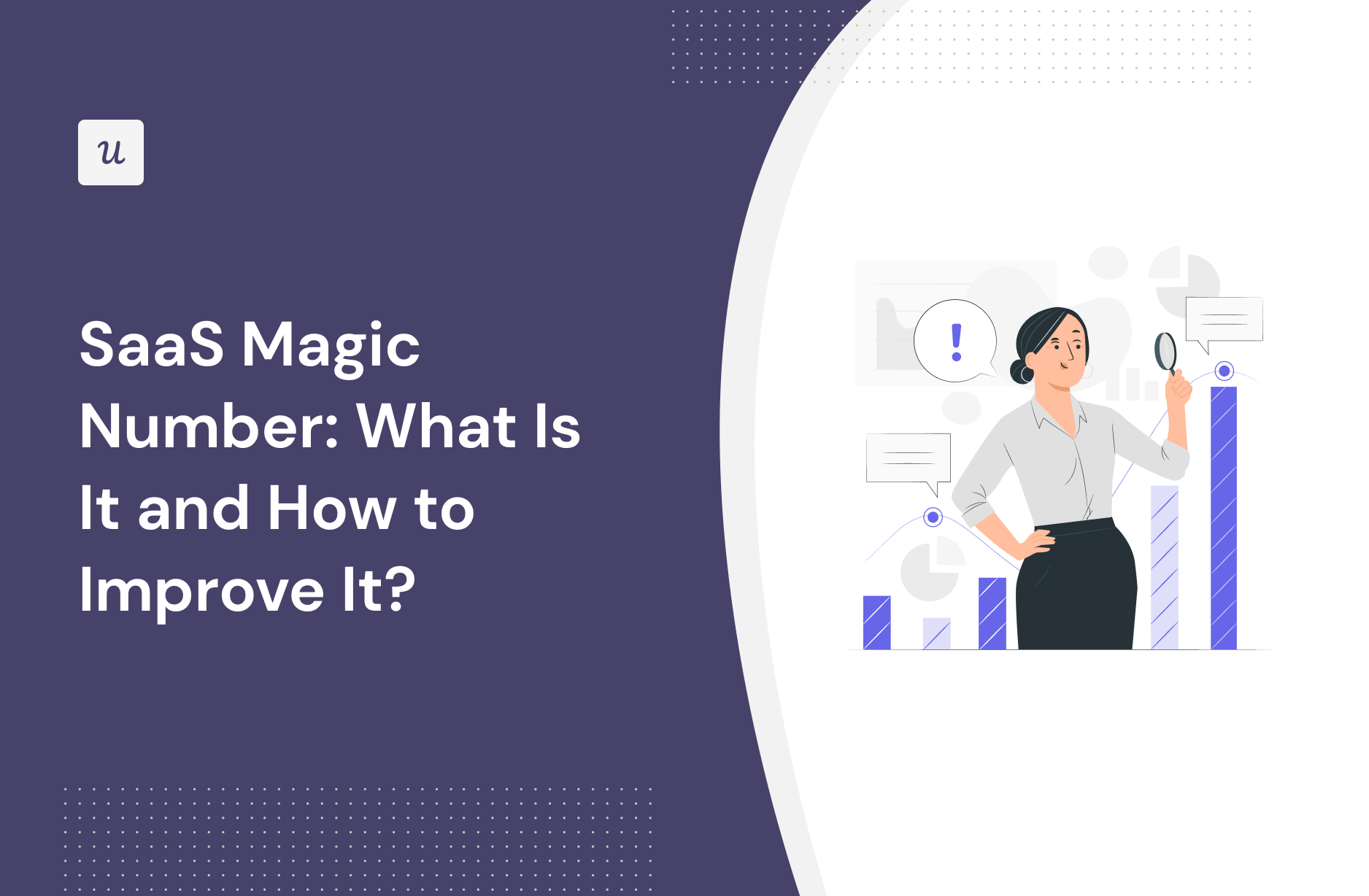
Try Userpilot Now
See Why 1,000+ Teams Choose Userpilot

What is the SaaS magic number?
In essence, the SaaS magic number is a metric that measures sales efficiency.
In other words, it measures how many dollars’ worth of revenue is generated per dollar spent on acquiring new customers through sales and marketing.
What is the difference between CAC payback and magic number?
Customer Acquisition Cost (CAC) payback period and the magic number are both metrics used by businesses to evaluate the efficiency and sustainability of their acquisition efforts, but they focus on different aspects of a company’s financial performance.
The CAC payback period includes the gross margin in its calculation and is expressed as a specific timeframe (in months) within which the company expects to recover its costs.
The SaaS magic number formula doesn’t factor in gross margin and does not provide a time frame for cost recovery.
Why is the SaaS magic number important?
The SaaS magic number is an integral step in understanding the sales efficiency and marketing efficiency of your campaigns.
This, in turn, helps you optimize your marketing expenses and reduce the overall customer acquisition cost where possible.
It can also tell you when you should reduce marketing spend centered around acquiring new users and instead focus on things like conversion rate optimization or customer expansion.
Finally, it can serve as an indicator of whether you need more tools or training to increase your ROI.
How to calculate the SaaS magic number?
To calculate the SaaS magic number, you need to take the current quarter’s recurring revenue minus the previous quarter’s recurring revenue then multiply it by four (for annual run rate) and divide it by the cost for sales and marketing efforts in the previous quarter.
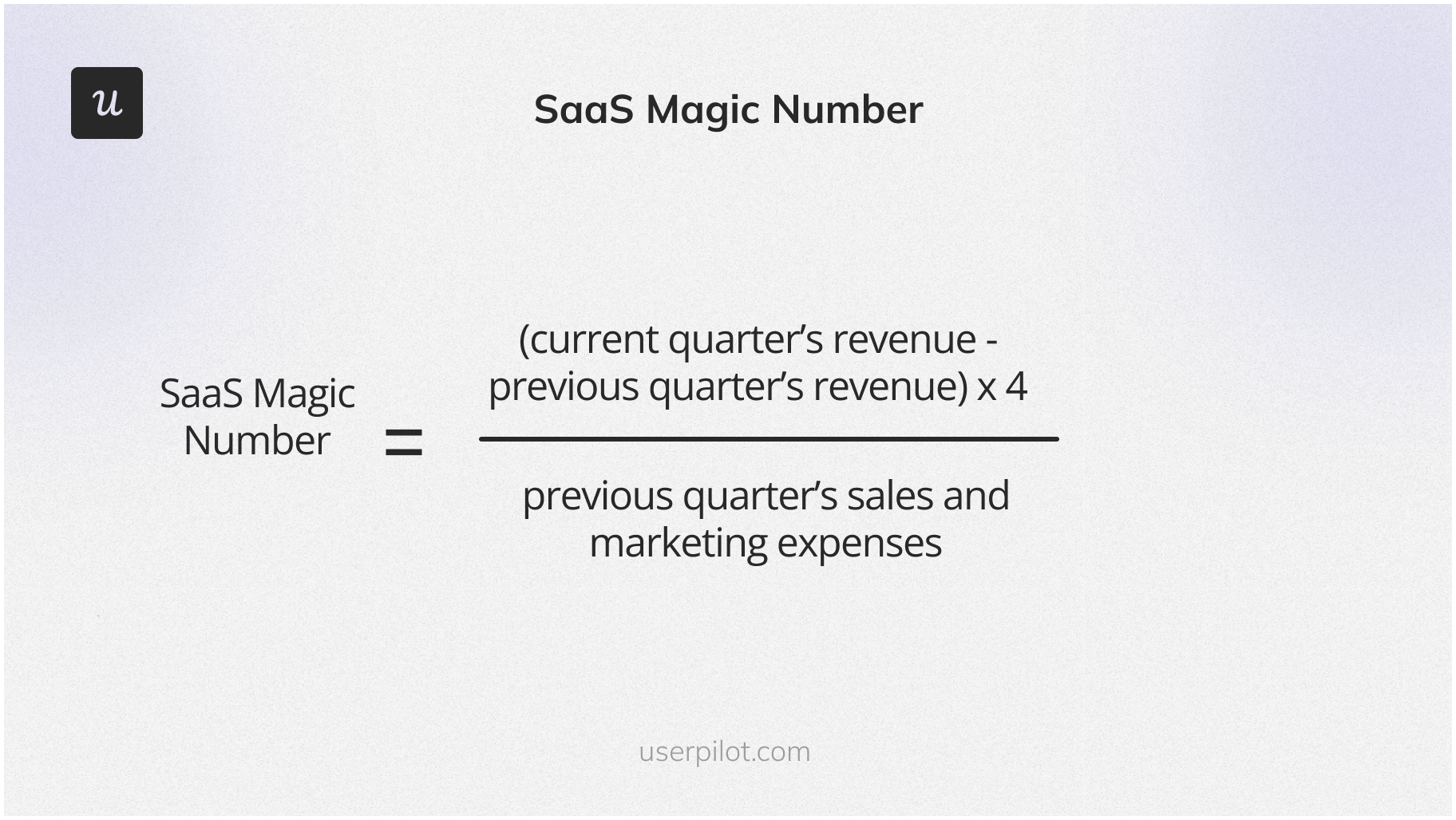
This shows you the net growth that your SaaS business is experiencing and whether or not your marketing strategy is translating to revenue growth.
The SaaS magic number isn’t the only sales efficiency metric but it’s one of the best ways to measure ROI on your total marketing investment.
What other metrics are related to the SaaS magic number?
While the magic number is undoubtedly an invaluable sales and marketing metric to monitor, there are still things it can’t tell us.
These include the LTV:CAC ratio, churn, and gross margins. The reason it can’t calculate gross margins is that it doesn’t account for the cost of goods sold or COGS.
1. LTV:CAC ratio
The LTV:CAC ratio measures how each customer’s lifetime value compares to your customer acquisition costs.
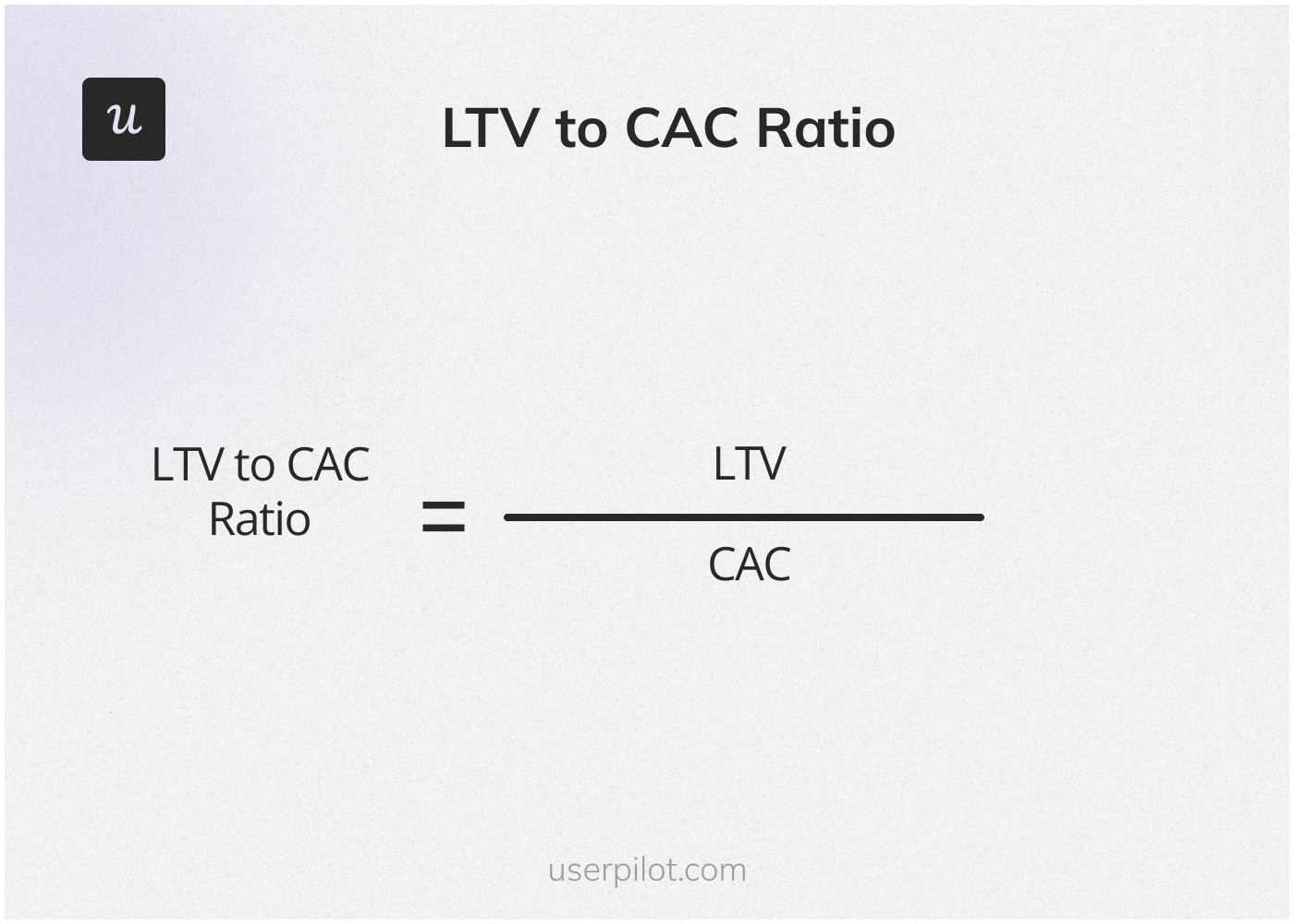
For instance, an LTV:CAC ratio of 2:1 means the customer’s lifetime value is twice the amount spent on acquiring them.
This metric is essential because it tells you how profitable your customer acquisition efforts are and ties in well with sales efficiency metrics that focus on growth — such as the magic number.
The ratio also factors in churn to establish the effectiveness of your customer success team.
2. New user revenue vs expansion revenue
While the magic number does measure the revenue generated from your marketing spend, it doesn’t differentiate between the revenue generated by acquiring new users versus the expansion revenue that you get by upselling your existing customer base.
The latter is called expansion revenue and it measures how much money you generate from existing customers.
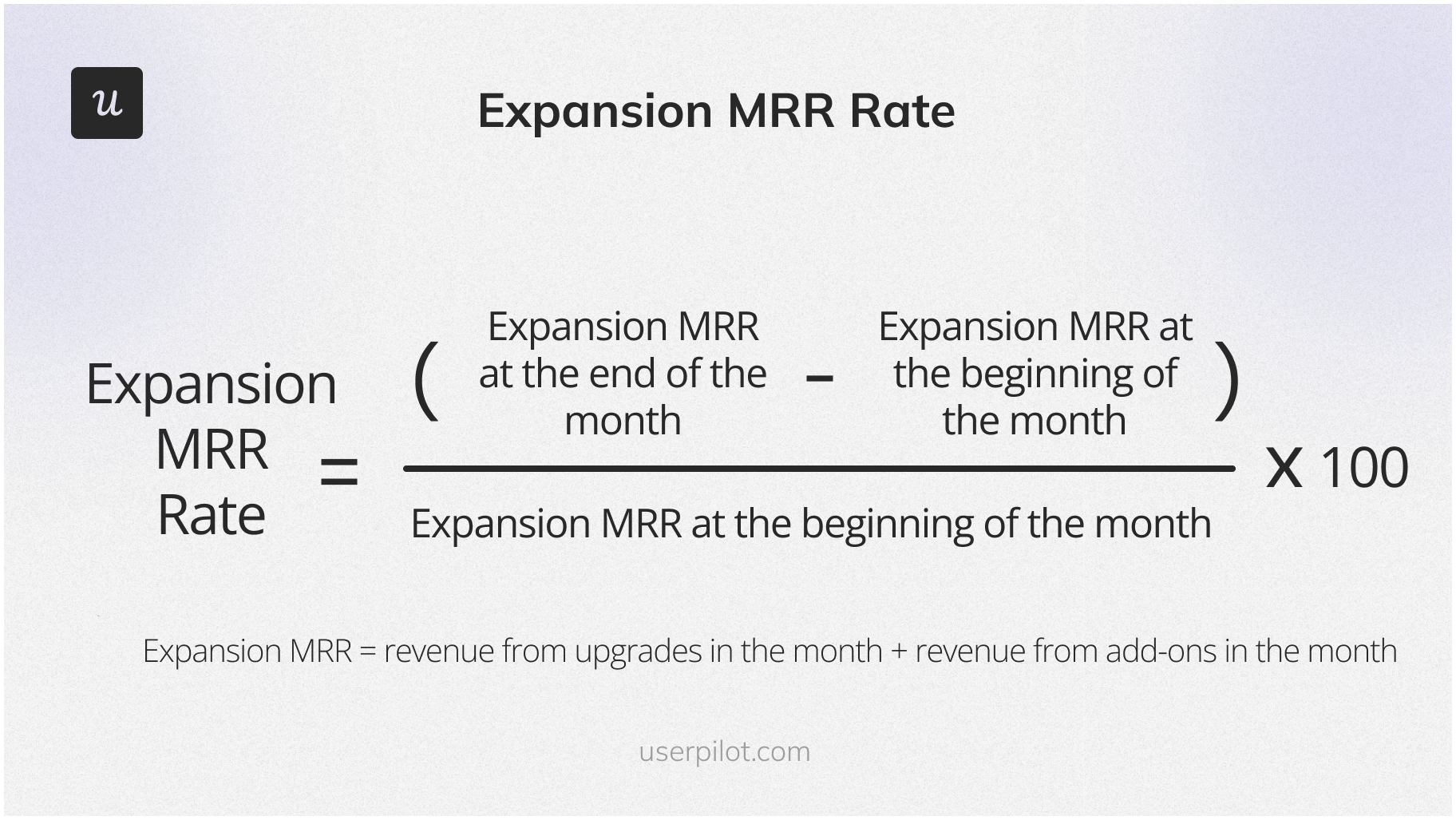
Staying on top of where your revenue growth is coming from — either new subscriptions or plan upgrades — will help you evaluate which areas your marketing team can improve on.
If expansion revenue is up but signups are down then you should focus on new customer acquisition and vice-versa.
3. Revenue churn rate
Tracking revenue churn is a crucial part of projecting the future profitability of your company since it encompasses losses in the form of revenue and users.
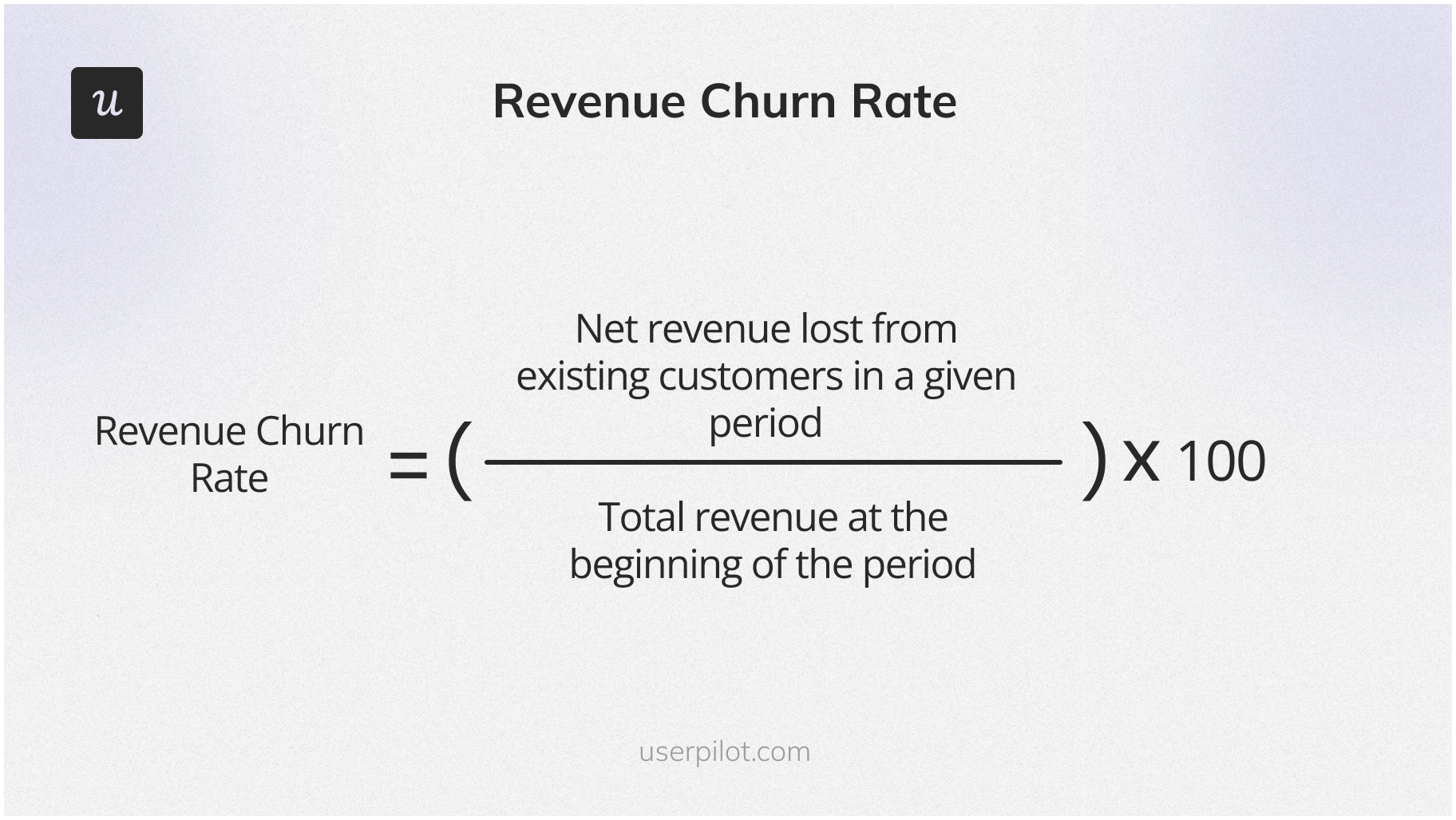
The higher your churn is, the more you’ll need to spend on your sales and marketing engines to replace those users.
If you increase your expansion MRR rate then you could achieve negative churn — which is when the monthly recurring revenue you generate is greater than the amount of money lost to churn.
In this scenario, you could consider cost reduction since marketing expenses are lower when upselling.
SaaS magic number benchmarks: what’s a good magic number in SaaS?
SaaS magic number benchmarks should be taken with a grain of salt since the business model and COGS can vary wildly between SaaS companies. That said, here are three scenarios and how you should respond to each.

A magic number lower than 1
Having a magic number lower than 1 means it will take you longer than one year to recoup the money spent on sales and marketing activities.
In this scenario, you should strive for better sales efficiency by focusing on the channels that bring you the highest ROI — but more on that later.
However, low results on a sales efficiency metric aren’t the end of the world since marketing costs can translate to more than just revenue growth.
Your marketing teams may be boosting your net promoter score or strengthening your brand so existing customers don’t switch to other SaaS companies.
Magic number 1
A magic number of 1 is considered efficient since the incremental revenue generated will be enough to recover the expenditure on sales and marketing in one year (meaning you’ll recoup the costs from the last quarter in 12 months).
A magic number above 1
A magic number higher than 1 is considered highly efficient since you’re generating a lot of revenue relative to the money spent on marketing processes.
However, it could also be an indicator that you’re under-investing in marketing and sales which is why your payback periods are so short.
How to improve your SaaS magic number?
What strategies should SaaS companies adopt to improve their magic number and ultimately, sales efficiency? Let’s have a look.
When your magic number is equal to 1
A magic number equal to 1 means your payback period on sales expenses from the last quarter is one year.
Essentially, your business is at equilibrium since the financial data shows that your marketing expenses are bringing in recurring revenue.
If you have a magic number greater than 1 or lower than 1, that’s when you want to start looking at your sales and marketing strategies to ultimately figure out where you can improve. You should also be wary of your cash runway to ensure you break even on sales and marketing costs before it’s too late.
When your magic number is less than 1
If your magic number is less than 1 then it will take you more than a year to recoup your initial investment for that quarter. The best way to recover is to reduce spending on strategies that yield the lowest results and divert that capital to high-ROI channels to maximize your returns.
Use upselling techniques to increase revenue
You can also focus on generating more revenue from your existing customers since this is more profitable than acquisition and can thus improve your magic number metric.
Using contextual in-app messaging to display upsell modals at the ideal moment can bring in additional recurring revenue while making your customers more satisfied.
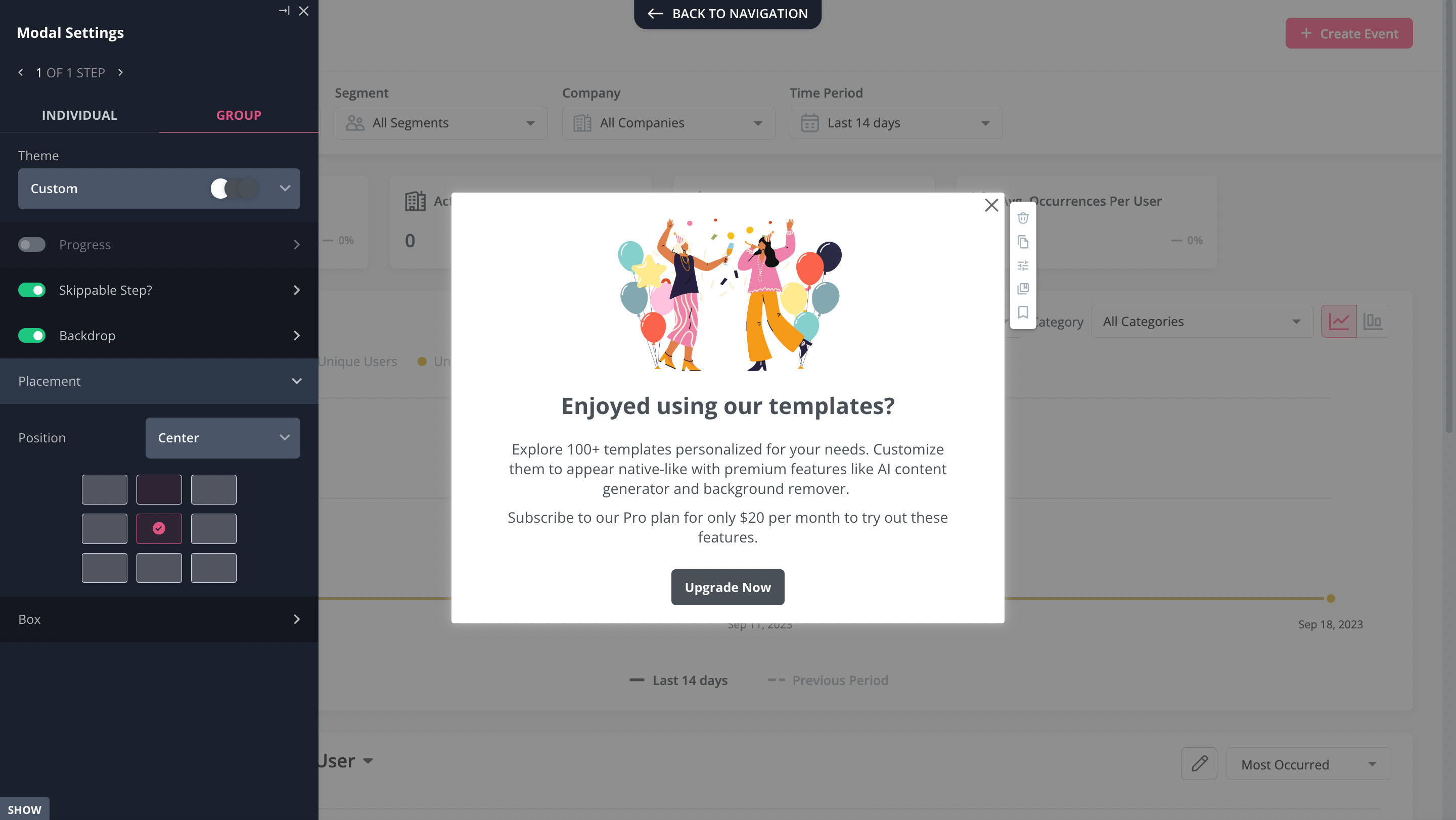
Reduce customer churn rate
Reducing churn is also an important step to raising your magic number — which you can achieve by running churn surveys.
These give you an opportunity to learn why users are churning and improve your product in the future, plus offer alternatives to users who are about to churn, based on what they answer to a simple multiple-choice survey, like the one below.
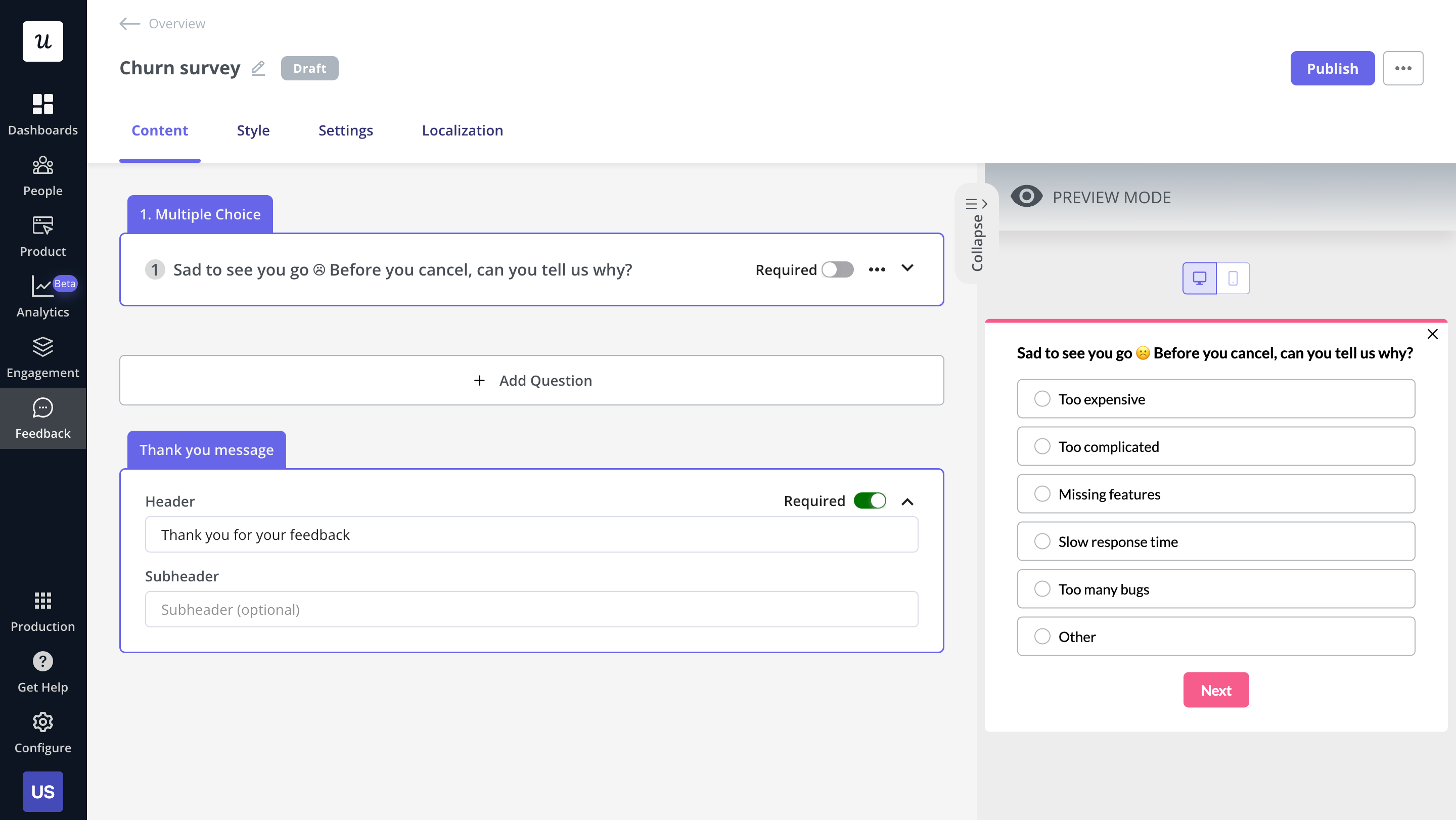
The key questions you should be asking are:
- What’s the main reason you are canceling your account?
- Why did you decide to cancel your subscription?
- What made you cancel your account?
NPS surveys can also help since they proactively identify problems before users churn. Gathering user sentiment in this way can help you raise your magic number sooner than you think.
Use growth loops to acquire customers
Growth loops are mechanisms where the actions of existing users lead to the acquisition of new customers. They’re often self-reinforcing and create a cycle of growth – ultimately, increasing your acquisition efforts while reducing CAC.
Here are some ways you can create growth loops:
- Embed virality into your product. Create features or elements that naturally encourage users to share with others.
- Leverage network effects, where the value of your product or service increases as more people use it.
- Encourage users to create content related to your product or service. This can lead to organic growth as user-generated content often gets shared, attracting new users.
- Implement a referral program where existing customers are incentivized to refer new customers. A great example of this is Dropbox.

When your magic number is greater than 1
If you have a magic number above 1 then you shouldn’t rest on your laurels and fall into complacency.
Your marketing framework should optimize for growth sustainability and your company’s performance in the long run rather than focusing on short-term sales efficiency metrics.
While SaaS metrics like a high magic number may make it seem like everything is as it should be, you should never hesitate to scale up your teams and campaigns. Fast ROIs on your investments mean that you have money to spare to generate even more revenue instead of letting capital lay dormant.
To continue the positive trend, double down on the sales and marketing channels that bring you the highest returns. You should also broaden the customer scope of your SaaS product and have your sales reps target new demographics.
Exploring new channels and marketing solutions may increase your payback period but could also uncover untapped sources of growth that you won’t find through historical data points alone. Lastly, consider scaling up your customer success team to ensure churn doesn’t derail your positive trajectory.
Conclusion
As you can see, the SaaS magic number is one of the best ways to gauge your sales and marketing efficiency across all campaigns. This, combined with other SaaS metrics, can help you create a capital-efficient growth model that allows you to scale without burning through all your cash.
If your magic number is less than one you might want to start implementing churn surveys and upsell prompts. Get a Userpilot demo today and see how you can do it code-free!






